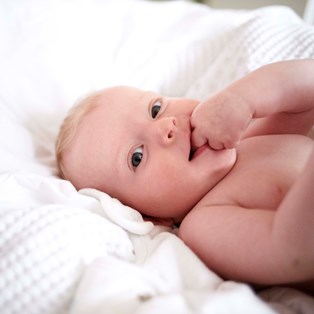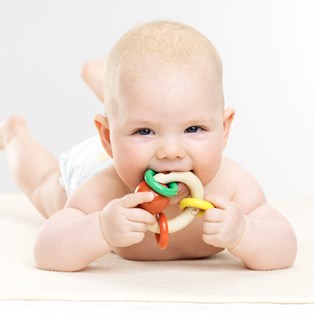Amber teething necklaces: do they actually work?

Your guide
By Practical Parenting Team
April 03 2019
How do amber teething necklaces work?
Amber is fossilised tree resin. The manufacturers of amber teething beads say one of the chemicals in Baltic amber, succunic acid, has pain-relieving qualities.
They claim that as the amber is warmed by the baby’s skin, the succunic acid is released and absorbed through their skin and into their blood.
But health authorities say baby’s skin isn’t hot enough for the acid to be released. There’s also no evidence that succunic acid can be absorbed through the skin or that it has any pain-relieving effects.
In Australia, the Therapeutic Goods Administration (TGA) has found several retailers that market these beads as a teething necklace had no evidence to support these claims and they were ordered to stop.

Getty Images
Is an amber necklace for babies safe?
The chemicals in the amber may not relieve your baby’s pain but they won’t harm them either. However, the Australian Competition and Consumer Commission (ACCC) has warned that wearing a teething bracelet, teething anklet or necklace poses physical safety risks. The Australian Dental Association has also advised against their use.
There is a strangling risk with the necklaces if they snag on something and with all baby jewellery there is a choking risk. This is reduced if each bead is individually knotted but your baby can still choke on one bead.
If you do decide to try amber jewellery, make sure you buy well-made genuine Baltic amber jewellery that comes with a certificate of authenticity and is designed to break easily under pressure so there’s less risk of strangulation.
Always supervise your baby when they’re wearing their amber beads, take the jewellery off when they sleep and try not to let them chew or suck on the beads.
There are several other methods you can try to relieve your baby’s teething pain, including letting them chew on teethers. Silicone teethers that are BPA free or those made of beech wood are popular.













